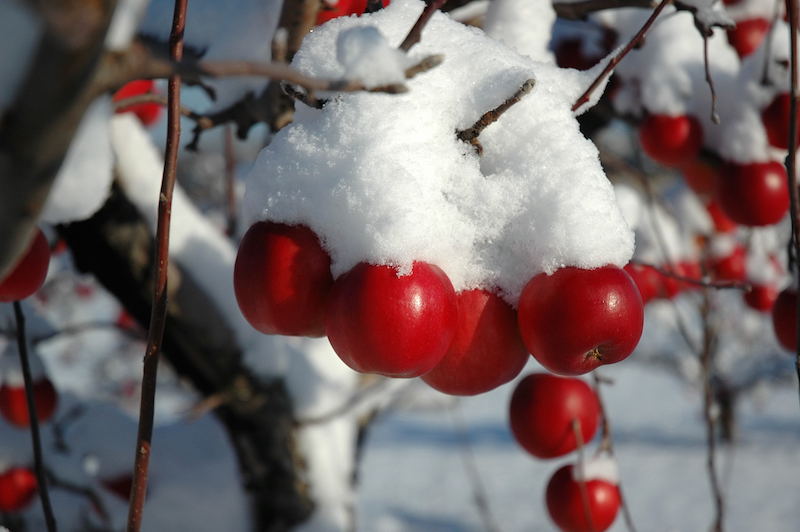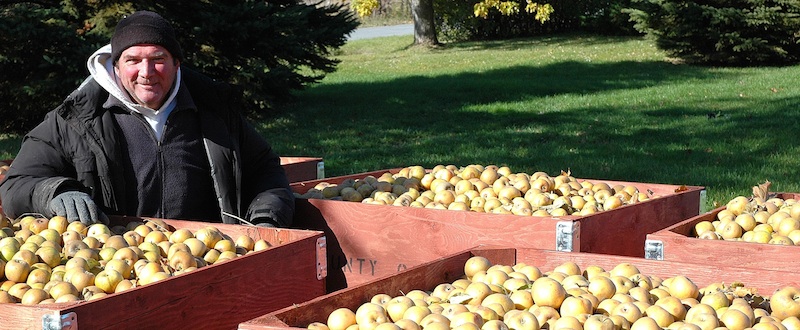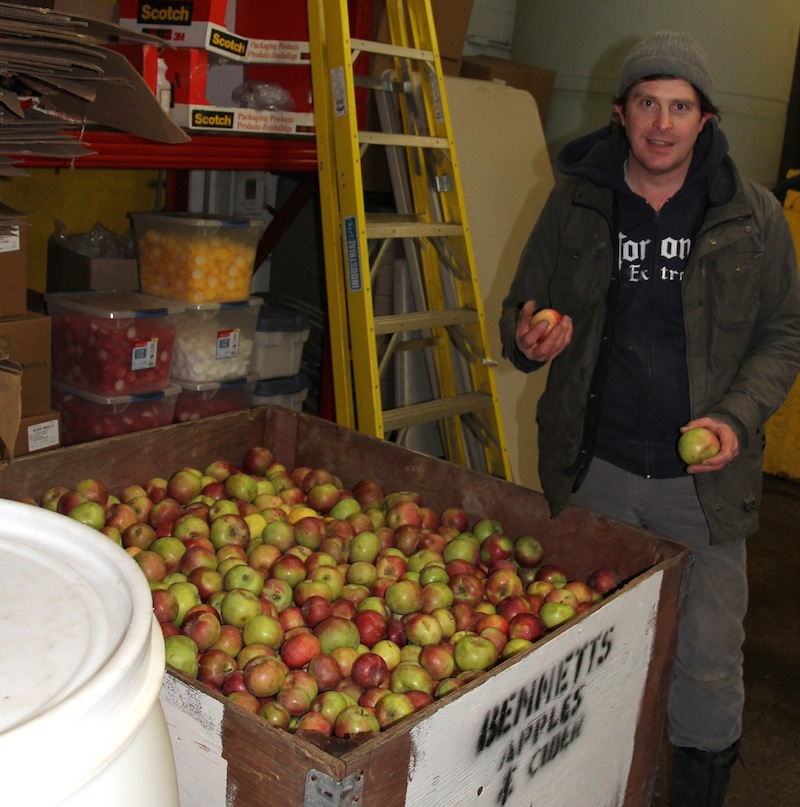
With recent good news arriving for Ontario’s craft cider producers, get ready to fill your boots with a plethora of hard apple ciders in myriad styles from all corners of the province.
Tawse Estate Winery in Niagara is just the latest in long list of new producers either adding cider to their portfolios or rushing to create their own brand in what looks like a very friendly environment for cider (see Tawse cider review below).
The Ontario government last week announced changes that will increase choice and convenience for consumers by giving craft cider space on shelves of up to 300 independent and large grocery stores. Grocery stores across Ontario will be able to start selling wine and cider this fall, following beers sales earlier this year.
Premier Kathleen Wynne made the announcement Thursday that the government has accepted the final recommendations from the Premier’s Advisory Council on Government Assets, chaired by Ed Clark. These recommendations conclude the council’s review of the beverage alcohol sector.
Other key aspects of the recommendations include:

• Allowing cider to be sold wherever beer is sold in grocery stores
• Including fruit wines and craft cider in a program that allows Vintners Quality Alliance (VQA) Ontario wines to be sold at farmers’ markets
• Reducing red tape and eliminating unnecessary regulations to increase opportunities and deliver cost savings for producers and their customers, including new opportunities for craft distillers.
• Cider is one of the fastest growing sales categories in the LCBO. Ontario craft cider sales rose by 89 per cent per year from 2011 to 2015.
Quick Facts

• There are 19 craft cideries and over 40 wineries that produce fruit wines in Ontario.
• In Ontario, cider usually has a five to seven per cent alcohol content and is gluten-free because it is made of fruit, not grain.
• 83 wineries and 212 farmers’ markets participate in the VQA at Farmers’ Markets pilot program, with sales of more than $1.4 million dollars.
• The bidding and authorization processes will be similar to the beer in grocery store initiative. The first 70 of 150 universal wine and beer authorizations will be issued this fall, allowing grocers to sell wine, beer, cider and fruit wine.
• Up to 150 existing winery retail stores will be permitted to operate their stores inside grocery stores with a shared checkout. These grocery stores will be authorized to sell any Ontario wine, as well as beer and cider.
• To ensure fair representation of grocers and an equitable geographic distribution, the allocation criteria for wine will be similar to beer, with authorizations reserved for independent grocers and allocated across regions.
• VQA wine sales in Ontario were $288 million in 2014-15, a 66 per cent increase since 2009. Ontario now has more than 240 wineries, and the industry has created 2,000 direct jobs.
• All 60 grocery stores from the first Request for Bids for beer are now authorized. Many had beer on their shelves within a month.

Thomas Wilson, chair of the Ontario Craft Cider Association, had this to say about the changes: “Ontario craft cider producers welcome the government’s commitment to permit cider to be sold in grocery stores and farmers’ markets. We are excited about the opportunity to open up our local products to greater sales channels to reach Ontario consumers. This announcement supports our vision to develop and maintain a world-class cider industry in the province using only local fruit from Ontario farmers. We look forward to continuing to work with the government to expand this exciting and growing industry.”
As with any growing industry, cider producers will have to face the reality of keeping up with demand and finding a way to migrate from a bar and tap environment to a consumer-driven store-packaged environment to get their products to a much wider audience.
So many of the hard apple ciders that I enjoy are still not available at the LCBO and can be difficult to find at bars and restaurants where I live in Niagara.

I was a little disappointed by the selection of ciders submitted last week to what is billed as “Ontario’s Finest Cider Competition.” I was asked to help judge the competition that is held as part of the Ontario Fruit and Vegetable Convention.
The competition was divided into three categories: Dry cider, sweet ciders (non-alcohol) and specialty ciders (which I judged).
Only seven ciders were submitted to be judged in the specialty category and nine ciders were submitted for the dry category.
That is not a good representation of the craft ciders being produced in Ontario.

The ciders that were submitted (at least in my category) were of high quality but I think it would irresponsible to call the winners the best in the province if only seven ciders were in the competition. I don’t know why more cideries didn’t submit samples, other than it is difficult for small producers to even get their samples to Niagara Falls for judging.
If we are going to take cider judging seriously, a lot of discussion has to take place in how to conduct the judging, who the judges are, how to get a wider selection of ciders and then how to maximize exposure when the results are announced.
I know this is all new for cider producers, but they must strike while the irons are hot.
 The release of Tawe’s first sparkling cider, which is made from a blend of Ontario grown McIntosh, Empire, Northern Spy, Red Delicious and Gala apples, is a clear indication that wineries, which already have the infrastructure in place to make cider, are increasingly turning to other products to beef up their portfolios. More wineries will be announcing ciders in their portfolios this spring.
The release of Tawe’s first sparkling cider, which is made from a blend of Ontario grown McIntosh, Empire, Northern Spy, Red Delicious and Gala apples, is a clear indication that wineries, which already have the infrastructure in place to make cider, are increasingly turning to other products to beef up their portfolios. More wineries will be announcing ciders in their portfolios this spring.
Tawse winemaker Paul Pender decided to make a cider after losing about 40% of his grape crop in 2014 and 2015.
“We had two very cold winters in a row, and a few grape varieties produced little to no crop. So I thought it would be great to make a cider to fill the gap.”
Additionally, “local craft ciders have gained in popularity in the past few years” says Pender, noting that the selection of Ontario ciders at the local LCBO shelves and restaurant beverage lists have increased immensely.
Pender really wanted to stay true to the flavour found in a freshly picked apple.
Currently, the Tawse Cider can only be purchased in 20L Kegs by restaurants, but
Pender is considering producing cans and bottles in the long term. Paul Pender’s team is also working at developing a cherry cider and a traditional method sparkling cider that will be available in 750 ml bottles later this year.
Here is my review:
Tawse Sparkling Apple Cider (90 points) — A refreshing nose of baked apple, piecrust and sweet spices. It has soft effervescence on the palate with crisp apple flavours that’s clean and balanced with a touch of sweetness on the finish. Refreshingly delicious.





Comment here